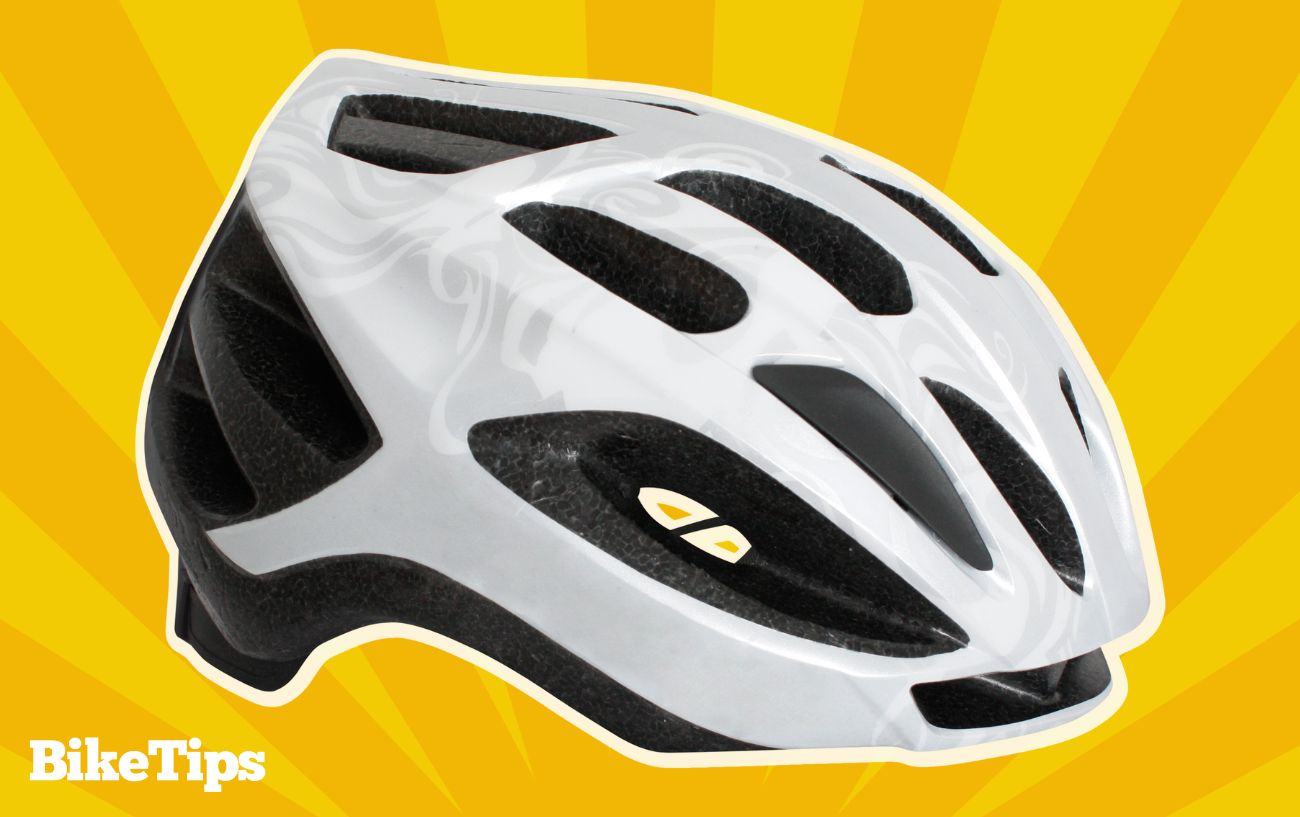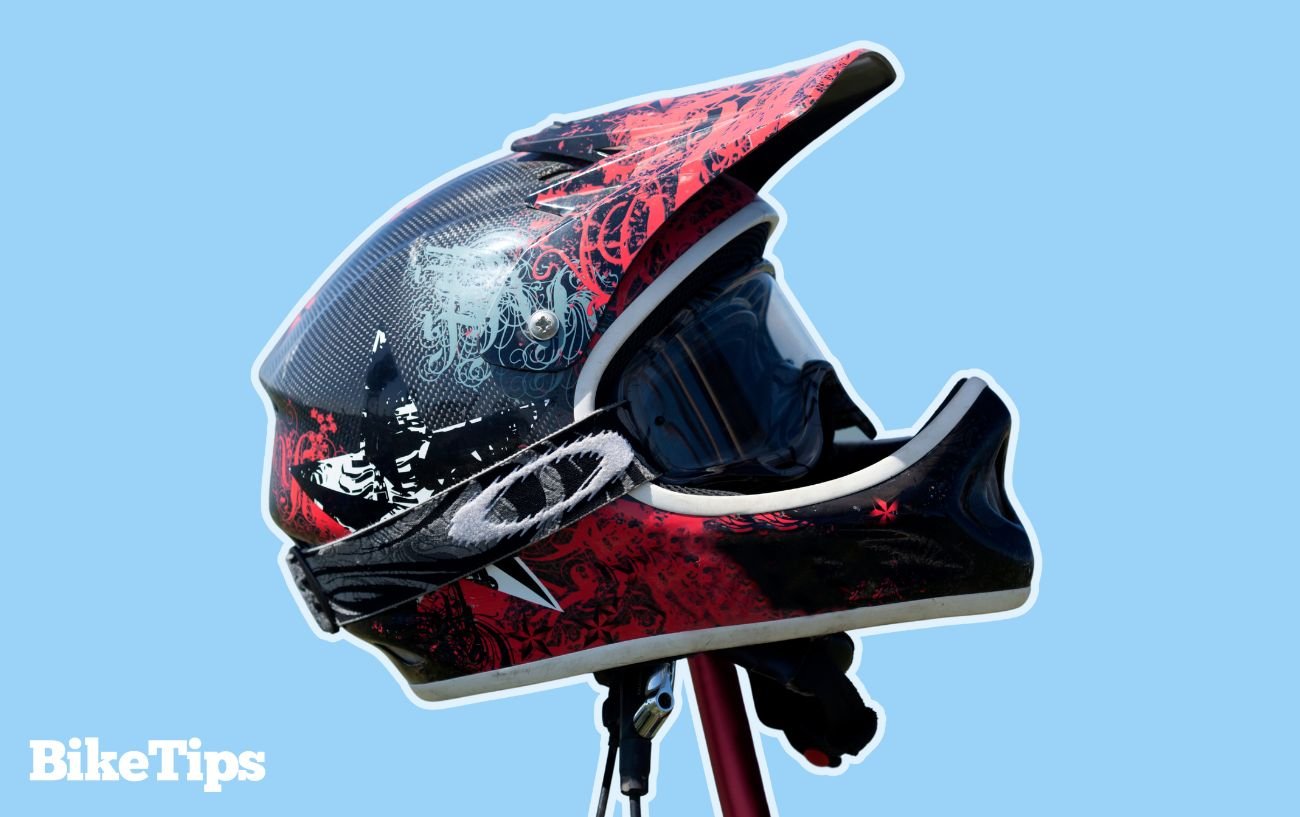No part of your cycling kit is more important than your helmet.
It is the last line of defense against serious head injuries in a crash and it must be kept in good condition.
Unfortunately, there’s no quick answer as to whether bike helmets expire due to time alone.
The Snell Memorial Foundation recommends replacing a bike helmet every five years, while the Consumer Product Safety Commission (CPSC) – the US government testing body – suggests replacing them every five to ten years.
Some manufacturers recommend replacing your helmet after as little as three years.
However, there’s no real evidence to suggest that the EPS foam in bike helmets degrades meaningfully within a human lifespan, while tests by the Snell Memorial Foundation themselves on motorcycle helmets after 20 years in storage found that they still met modern safety standards.
However, that doesn’t mean that your cycling helmet doesn’t need replacing periodically.
The impact of normal wear and tear means a helmet that’s been used regularly will age very differently from one kept in storage, so there’s plenty more to understand as to when a bike helmet “expires”, and how often you should replace one.

Do Bike Helmets Expire? The Official Helmet Safety Guidelines
The 1998 Augmentation To The 1990 Standard For Protective Headgear (For Use In Bicycling) drafted by the Snell Memorial Foundation states:
“At the present time, the Foundation recommends that bicycle helmets be replaced after five (5) years, or less if the manufacturer so recommends”.
Helmets.org, a non-profit organization founded in 1989 and staffed by volunteers who serve on the ASTM Helmet Standards Committee, is less committed when it comes to replacing helmets due to degradation over time.
The European Standards EN 1078 governing bicycle helmets, and also adopted by the British Standards Institute (BSI), have even less to say about degradation and expiration.
They state that “any helmet that sustains a severe blow needs to be replaced even if damage is not apparent” but do not go as far as the aforementioned Snell standards in recommending replacing the helmet periodically.

Undoubtedly, the standardization of helmets has undoubtedly made them safer and gives the consumer much more confidence – but the lack of consistency as to whether bike helmets expire leaves cyclists wondering how often they really need to replace one.
Helmet manufacturers will recommend replacing your lid every three to seven years or so, with some variation between brands and models.
Given the relative lack of consensus between standards authorities, cynical cyclists might be forgiven for feeling that manufacturers have an incentive to recommend replacing helmets more regularly to sell more of them.
However, when it comes to safety around head injuries, you should never take any chances.
For that reason, we recommend always following official manufacturer guidance as to the expiry date of your helmet, even if it feels overly cautious.
It’s also worth recognizing that if you use your helmet outside of the official manufacturer’s guidelines, you’re unlikely to be covered by any warranty or legal protections.

When Should You Replace A Bike Helmet?
After A Crash
Bike helmets are single-use safety devices, designed to do their job only once.
Even if the damage looks superficial, the foam has likely been compromised. It’s designed to compress in order to absorb the energy of the impact to protect your head, but can only do so once.
This remains true even if you don’t see any visible signs of stress on the helmet itself, or if you feel that your head wasn’t badly hurt in the fall.
If the helmet did its job properly then there is a good chance that your head will feel like nothing happened.
In fact, you may not even realize you hit your head at all when the adrenaline from a crash is factored in – so the golden rule is to always replace your helmet after a crash.
The same is true if you drop your helmet on a hard surface by accident – after any notable impact, the helmet should be replaced.

Any Noticeable Cracks or Sun Damage to the Plastic Shell
While the EPS foam itself doesn’t degrade naturally from time alone – at least not within a human lifespan – it can be easily compromised if the plastic outer shell protecting it is damaged.
Check your helmet regularly for any small cracks or dents in the plastic shell, and replace it if you find any.
Extensive UV light exposure from sunlight can also make the plastic shell more brittle. If the color looks faded or bleached, it’s probably worth replacing as there’s an increased likelihood of hairline cracks appearing, which could compromise the EPS foam beneath.
Essentially, if there are any visible signs of damage – even minor ones – it’s time to replace the helmet.

The Retention Systems are Worn
Whatever system your helmet is fastened with, it can only protect you effectively if it remains securely in place.
A helmet that slides around on your head is almost worthless, so if there are any problems with the fastenings – the slide adjusters are broken so you can’t tighten it, the dial is worn and won’t ratchet properly, or you just can’t get the chin strap tight – it’s time to replace it.
When The Manufacturer Says To
If you’ve reached the end of the manufacturer’s stated expiration date for the helmet and none of the above issues have surfaced, we would still recommend that it’s time to replace the helmet.
Plenty of cyclists would tell you that there’s no need and happily continue using that helmet until they had a reason to replace it, but we would always err on the side of caution when it comes to head safety – plus you’re likely to lose any legal protections by using the helmet outside the manufacturer’s guidelines.
It’s also worth considering that a helmet that’s received regular use could be in very different condition to one that’s been in storage for a similar time period.
While time itself may not necessarily cause the helmet to expire, regular wear and tear from everyday use could eventually take its toll on the shell or the EPS foam beneath, so the end of the recommended manufacturer’s lifespan could be a sensible moment for a replacement regardless.
Any Helmet From The 1970s or Earlier
Frankly, it would be remarkable if you own an old helmet from the ’70s in such good condition that none of the above factors apply.
If you do, however, the experts at helmets.org are unequivocal about immediately replacing any helmet from the 1970s or earlier as they mainly favored less-effective Styrofoam liners over the modern Expanded Polystyrene (EPS) foam liners.
The foam liners tended to be thinner than the modern equivalent and often did not have internal liners.
This meant that they tended to break up in a crash, an obvious danger if you were involved in an accident with multiple knocks, such as being hit by a car and then landing on the hard tarmac.

Take Advantage Of Helmet Innovations
Helmet technology is constantly evolving, although the majority of this evolution is in the form of performance benefits whilst continuing to adhere to the rigorous safety standards we have already spoken about.
In the last few years, new helmets in the professional peloton have shifted from elongated profiles to more rounded profiles as there was more focus on concussion and rotational loads in accidents.
Perhaps the most striking example of bike helmet innovation in this area is the development of MIPS. This stands for Multi-Directional Impact Protection and has been integrated into all the major helmet brands.
An extra layer between the EPS foam and the helmet liner allows for significant sliding movements (10 to 15mm in any direction) and prevents much of the rotational energy in the case of a crash from being transferred to the brain.
The inspiration for this technology comes straight from how our brains are protected in our heads.
There has also been a constant evolution in comfort, ventilation, retention system mechanisms, and aesthetics.
Although this last point seems supercilious, most road cyclists care deeply about how they look on the bike and the helmet is just as much of a fashion choice as their carefully curated jersey and matching socks.
If you like how you look in the helmet then you are much more likely to wear it. It’s a lesson I learned from teaching my children how to ride a bike, but one that is just as important for adults.

Conclusions – Do Bike Helmets Expire?
The engineer in me relies on evidence and hard facts. These are thin on the ground in this particular debate.
So, do bike helmets expire?
Based on the evidence, there’s not really enough to state equivocally one way or the other.
The way a helmet is used and stored will arguably make much more of a difference than time alone. A helmet that’s been used heavily for three years will likely be in worse condition than one that’s never been taken out of its original box for ten.
However, with the potential for brain injuries, you should always err on the side of caution.
Yes, it might be frustrating to replace what feels like a perfectly good helmet before it seems necessary, but the possibility for invisible wear – as well as remaining fully legally protected – makes it worth it in our opinion.



